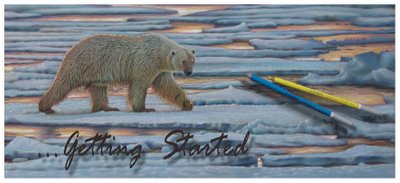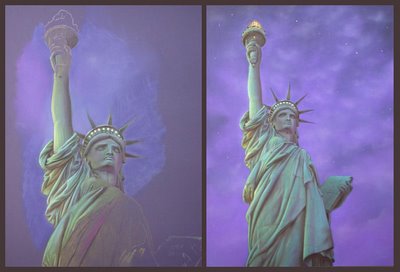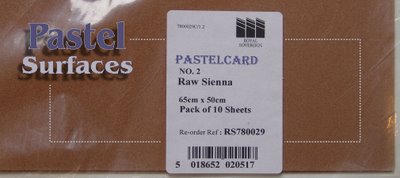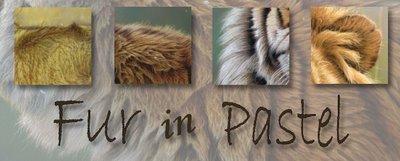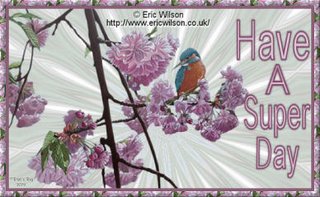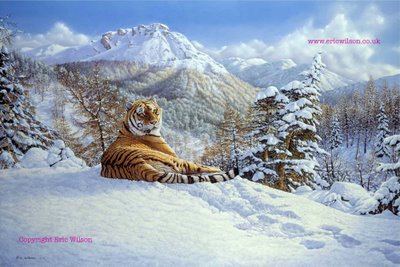
Fur, like water, can be a real struggle for an Artist to master. It isn't easy, it takes a lot of thinking about. Solid objects can be easily copied without much thought but fur demands much much more of the Artist. Fur separates the men from the boys so to speak. It exposes the level of understanding that an Artist has of his subject and distinguishes those that truly visualize their subject in lifelike three dimensional form from those that merely copy the static pixel patterns of a reference photograph.
I see a lot of big cat paintings from Artists of the latter catagory. The mistakes are easy to spot, they over simplify the direction of the fur, especially around the nose and head and cover up areas where the reference photographs aren't clear, with uniform sweeping lines of 'fur' that always seem to be at 90 degrees to the viewers eye. Fur is not like this, especially on the big cats where the surface can be more like the undulating surface of the sea with it's own crests and waves. Fur is soft to touch and soft to the eye. It does not give away it's secrets easily and an Artist should never over simplify it by reducing it to mere 'lines'.
There are three main areas to consider when painting a big cats fur:
Firstly, you need to consider the underlying anatomical structure of the animal. This is essential. It is like the foundations upon which a house is to be built. Forget all the 'How to draw a lion' pictures in art books where a lions head is reduced to two or three circles and a triangle. If you want to convey realism in your painting you have to look much deeper into the anatomy and travel around the animal in your mind, getting a true sense of the surface topography upon which the fur sits, and seeing in three rather than two dimensions. I can't stress strongly enough how important this is.
Secondly, you should consider lighting. Lighting is the key to conveying a three dimensional object and it's important to consider this at an early stage. You should look at how light affects fur. It can shine beautifully through it, it can highlight it, soften it or skim wonderfully across it
highlighting a few hairs here and there and underlining to the onlooker, the very nature of what you are painting.
Finally, you now need to consider the direction and nature of the fur that is covering the animals skin. In some areas like the nose, the fur will be very short and compact. In other areas like the sides of the face, the fur may be longer and less compact. You need to really LOOK at whats going on and visually get' inside' the fur. When you do this, you will see the relationship that exists between the surface contours of the animal and the furs direction, you will see that the two things complement eachother beautifully and when done correctly, the direction of the fur will enhance the shape of the animal and present it as a much more 'real' three dimensional shape. Artists that merely paint flat lines are working against themselves and destroying rather than enhancing the illusion of reality in their painting. Individual strands of fur are often pointing right at the viewer, they are sometimes overlapping or forming a crest where one direction of fur growth meets another coming from the opposite direction. All this needs to be observed and carefully noted. You might also consider how the environment your subject is in might be effecting the fur. Is it wet? Is it matted with dirt? is the wind blowing across it and ruffling it. All these considerations will help to convey something that is real instead of something flat and lifeless.
It is also very important never to lose sight of exactly what it is you are painting: Fur that is soft to the touch. It's difficult enough understanding such a complex things as it's direction, its, light and form, all it's differing lengths but you must also remember the very nature of fur itself. Remember how it feels. Fur should never be painted in a way that leaves it looking like a rigid forest of hairs.
Fur, like water, is ever changing, ever moving and that is why it escapes the grasp of all but the most dilligent and skillful of Artists.
When people tell me they feel they want to run their fingers through the fur I've painted I feel very proud. More than two decades of careful study have paid off.
I will continue on further posts with actual techniques. But it's important to consider all of the above first.


